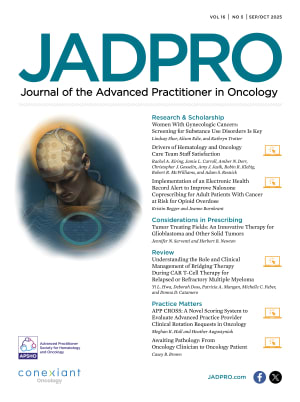Abstract
Talquetamab is a first-in-class G protein–coupled receptor family C group 5 member D (GPRC5D) and CD3-targeting bispecific antibody with > 71% overall response in patients with relapsed or refractory multiple myeloma who have progressed on three other drug classes. GPRC5D is highly expressed on myeloma cells, along with some expression in normal hair follicles, skin, and tongue. Its unique expression on these normal tissues results in a distinct pattern of adverse events (AEs), as observed in the phase I/II MonumenTAL-1 trial. GPRC5D-related AEs included oral side effects (e.g., dysgeusia, dysphagia, xerostomia) and dermatologic toxicities (e.g., skin, nail). These AEs can be managed by dose modifications, emollients, and/or topical or oral corticosteroids. Cytokine release syndrome and immune effector cell−associated neurotoxicity syndrome were consistent with the T-cell redirection mechanism of talquetamab and can be managed consistent with other trials of T-cell redirection therapies. Infection rates were mostly grades 1 or 2, and grade ≥ 3 infection rates were lower than B-cell maturation antigen−targeting bispecific antibodies; infections were treated with anti-infective agents. Adverse events were manageable and led to few treatment discontinuations. This review reports on talquetamab safety in MonumenTAL-1, with an additional pharmacy focus on strategies related to drug dispensing and clinical management.







